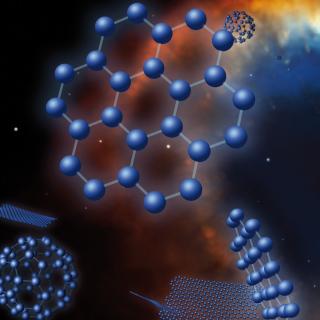Bibcode
Griffith, Emily; Weinberg, David H.; Johnson, Jennifer A.; Beaton, Rachael; García-Hernández, D. A.; Hasselquist, Sten; Holtzman, Jon; Johnson, James W.; Jönsson, Henrik; Lane, Richard R.; Nataf, David M.; Roman-Lopes, Alexandre
Referencia bibliográfica
The Astrophysical Journal
Fecha de publicación:
3
2021
Revista
Número de citas
47
Número de citas referidas
41
Descripción
We compare abundance ratio trends in a sample of ∼11,000 Milky Way bulge stars (RGC < 3 kpc) from the Apache Point Observatory Galactic Evolution Experiment (APOGEE) to those of APOGEE stars in the Galactic disk (5 kpc < RGC < 11 kpc). We divide each sample into low-Ia (high-[Mg/Fe]) and high-Ia (low-[Mg/Fe]) populations, and in each population, we examine the median trends of [X/Mg] versus [Mg/H] for elements X = Fe, O, Na, Al, Si, P, S, K, Ca, V, Cr, Mn, Co, Ni, Cu, and Ce. To remove small systematic trends of APOGEE abundances with stellar $\mathrm{log}(g)$ , we resample the disk stars to match the $\mathrm{log}(g)$ distributions of the bulge data. After doing so, we find nearly identical median trends for low-Ia disk and bulge stars for all elements. High-Ia trends are similar for most elements, with noticeable (0.05-0.1 dex) differences for Mn, Na, and Co. The close agreement of abundance trends (with typical differences ≲0.03 dex) implies that similar nucleosynthetic processes enriched bulge and disk stars despite the different star formation histories and physical conditions of these regions. For example, we infer that differences in the high-mass slope of the stellar initial mass function between disk and bulge must have been ≲0.30. This agreement, and the generally small scatter about the median sequences, means that one can predict all of a bulge star's APOGEE abundances with good accuracy knowing only its measured [Mg/Fe] and [Mg/H] and the observed trends of disk stars.
Proyectos relacionados

Nucleosíntesis y procesos moleculares en los últimos estados de la evolución estelar
Las estrellas de masa baja e intermedia (M < 8 masas solares, Ms) representan la mayoría de estrellas en el Cosmos y terminan sus vidas en la Rama Asintótica de las Gigantes (AGB) - justo antes de formar Nebulosas Planetarias (NPs) - cuando experimentan procesos nucleosintéticos y moleculares complejos. Las estrellas AGB son importantes
Domingo Aníbal
García Hernández